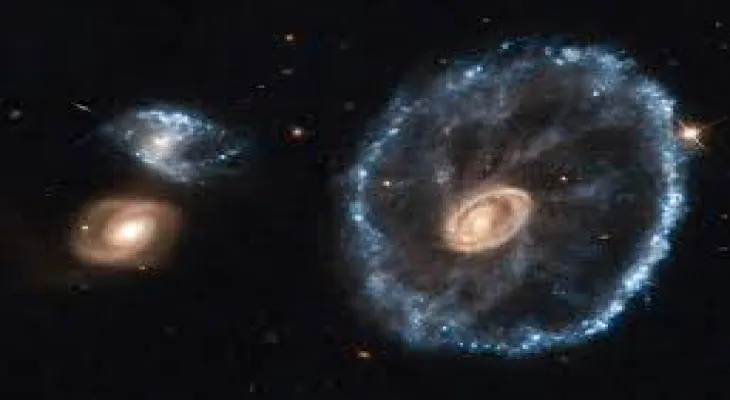Search here
Newspaper
Search here

Arab Canada News
News

Published: June 17, 2022
For the first time, NASA astronomers say they have observed a dead star tearing apart a planetary system and consuming material from other planets, which they say offers insights into the beginning and end of life here on Earth.
Data collected from NASA’s Hubble Space Telescope and other monitoring projects were used to analyze a white dwarf star — the dense dying remains of a star like Earth’s sun — called G238-44.
When stars collapse, the density of the remains often pulls other objects in space toward them. In the case of G238-44, the white dwarf was observed violently disrupting the inner and outer extensions of a nearby planetary system.
The disintegration of the planetary system around G238-44 also provides researchers an opportunity to learn about the planet’s components — what materials it is made of, and in what quantities, to better understand elements, minerals, and other substances.
Scientists say this case study, published by NASA on Wednesday, is essential for understanding our universe and its recently formed systems.
NASA scientists also noted that the white dwarf appeared to be drawing rocky and icy debris from nearby bodies.
Researchers say the drawing of icy debris is especially interesting due to what it suggests about how water is found on various moons or planets in the universe.
Scientists propose that icy debris colliding with dry, rocky planets "watering" them could be the way water was delivered to Earth billions of years ago.
Lead researcher Ted Johnson said in a press statement, "We have never seen both types of objects accreting onto a white dwarf at the same time." "By studying these white dwarfs, we hope to gain a better understanding of planetary systems that are still intact."
The observations of this white dwarf also gave researchers a chance to study how our planetary system may collapse at the end of the life of our sun.
When a star begins to die at first, it expands, changing the orbits of any nearby planets and violently pushing smaller objects like asteroids or moons into exciting and eccentric orbits.
But when the star collapses, it becomes dense, which may pull some objects into an irregular orbit very close to the white dwarf. The white dwarf’s force tears these objects apart and turns them into gas or dust that forms a ring around the dying star before falling onto its surface.
By watching how this process happens with G238-44, scientists can begin to understand how the process will repeat when the sun of Earth begins to die.
Research indicates that when our sun begins to expand at the end of its life, it will likely engulf and evaporate the first three planets in our solar system, including Earth, before its violent outbursts start disturbing the orbits of the remaining planets, in a manner similar to the planetary system around G238-44.
But scientists say the end of the sun’s life is unlikely to occur for another 5 billion years, so there is plenty of time to figure it out.
Comments